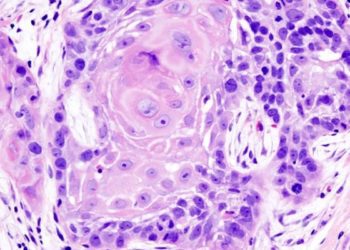Industry-sponsored anti-smoking advertisements are ineffective in stimulating smoking cessation
1. Smokers reported increased intention to quit smoking after seeing anti-smoking advertisements through television, cigarette packages, newspapers, and tobacco company websites.
2. There was no association with actual attempts to quit smoking.
Evidence Rating Level: 2 (Good)
Study Rundown: Corrective industry-sponsored anti-smoking advertisements were court ordered in 2006 after a large lawsuit filed against the tobacco industry in 1999. Since then, there has been no measure of the effectiveness on an individual level assessment of the corrective statements that were circulated via various media platforms such as television, newspapers, tobacco products and websites. Consequently, a population-level reach assessment is also lacking. This cross-sectional study examined whether there are increased odds of intent to quit smoking (in the next 6 months) and/or actual attempt to quit smoking (in the past 12 months) when exposed to anti-smoking advertising campaigns. Furthermore, the study assessed population-level reach was also assessed. The study results revealed that the majority of the participants did not see anti-smoking advertising campaigns on the questioned platforms. For those that were exposed to mass media anti-smoking campaigns, increased odds of intention to quit smoking was reported, however, there was a lack of association with actual attempt to quit smoking.
The results were limited by the cross-sectional design of the study and the survey responses may have been subjected to recall bias in the process. Furthermore, the results did not indicate which media platform the respondent was exposed to. Lastly, those who had recently quit smoking, were not identified in the survey and thus, only current smoker feedback was reported.
Click to read the study in JAMA
Relevant Reading: Mass media antismoking campaigns: a powerful tool for health promotion
In-Depth [cross-sectional study]: This study obtained and examined respondent data from the Health Information National Trends Survey conducted between January to April 2019 in the United States. A total of 5309 people participated in the study, of which 51.2% were women, 59.1% were non-Hispanic white respondents, and the mean age of the participants was 55.6 years. All adults 18 and above were included in the study and the results were sorted based on age, gender, race/ethnicity, educational level, residence, household annual income and smoking status. The participants had the option to either complete the survey via the internet or mail in a paper-based questionnaire. The collected data underwent an equal probability method sorting before being reported. The study found that corrective anti-smoking advertisements reached 45.8% of the general adult population (95% CI, 43.2%-48.5%) and 66.8% of current smokers (95% CI, 61.1%-72.4%) in the US. Overall, the findings indicated increased odds of intention to quit smoking with an adjusted odds ratio of 2.19 (95% CI, 1.10-4.34; P = .03) when exposed to multiple antismoking campaigns. Whereas, for those that were exposed to a single antismoking message, the adjusted odds ratio for intention to quit smoking was found to be 1.22 (95% CI, 0.50-3.01; P = .66). In terms of actual attempt to quit smoking, multiple anti-smoking messages or a single corrective anti-smoking message displayed a lack of association with the adjusted odds ratio being 1.31 (95% CI, 0.69-2.52) and 1.37 (95% CI, 0.64-2.92) respectively. The cumulative exposure to corrective anti-smoking messages displayed an adjusted odds ratio of 1.21 (95% CI, 1.02-1.44; P = .03) for intent to quit smoking and 1.00 (95% CI, 0.84-1.20; P = .98) for attempt to quit smoking. The study concluded that the reach of industry anti-smoking advertising campaigns within the general population is suboptimal and although increased intention to quit smoking was seen, there was a lack of association with actual attempts to quit smoking.
Image: PD
©2020 2 Minute Medicine, Inc. All rights reserved. No works may be reproduced without expressed written consent from 2 Minute Medicine, Inc. Inquire about licensing here. No article should be construed as medical advice and is not intended as such by the authors or by 2 Minute Medicine, Inc.





